How To Make Fresh Pasta Step By Step
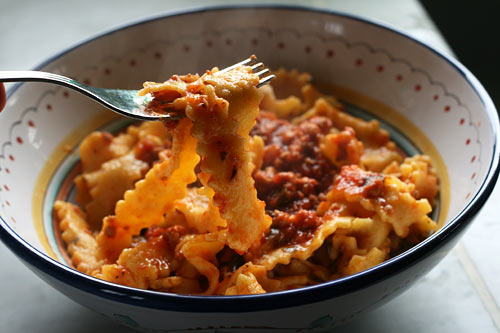
Making pasta at home is much easier than most people would imagine. By making your own pasta dough, you have an unlimited number of options available to you to create your own personal pasta dishes. Imagine delicate layers of egg pasta nestled between a spicy tomato sauce and meltingly tender cheese for unforgettable lasagna.
Or maybe you’d prefer soft pillows of ravioli stuffed with a tasty ricotta and spinach filling. You too can prepare dishes like this, and many others once you learn the basic technique of making your own pasta.
The two principle ingredients for making a basic egg pasta are flour and eggs. I use all-purpose unbleached flour as it has high gluten content, which creates fairly firm pasta dough. Large, fresh eggs are the only other ingredients unless a splash of warm water is needed to form workable dough.
Generally, I would use 3/4 cup of flour for every large egg added. You can increase this recipe as needed depending on the type of dish you are making, or the quantity of people you need to feed. If I am making a stuffed pasta, such as ravioli or tortellini I add a tablespoon of olive oil to my ingredients to keep the dough pliant. Many folks use semolina flour to make their pasta, and that too is something you may want to try. I often replace 1/2 cup of all-purpose flour with 1/2 cup semolina which gives the pasta a little more texture and firmness.
How To Make Fresh Pasta Step by Step
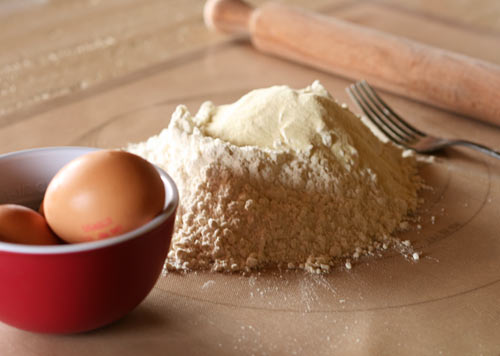
To start, mound your flour on a large pastry board, or the counter, and make a well in the center.
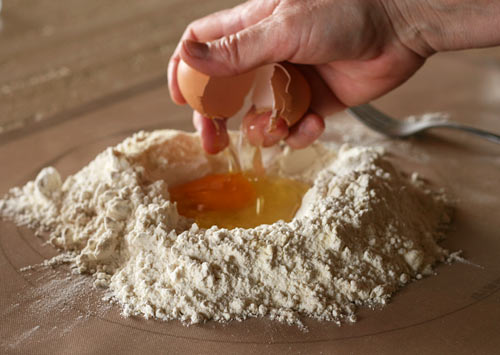
Break the eggs into this well, and start to scramble each egg with a fork as it is being added.
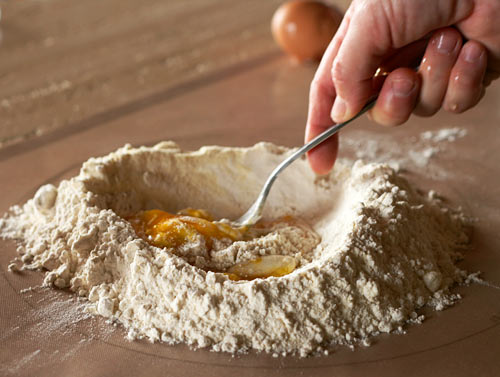
Start to incorporate the eggs and flour by slowly bringing more flour in from the inside edges of the well.

Continue stirring the eggs into the flour, pulling the flour into the center.

Continue mixing with the fork until you have a soft dough.
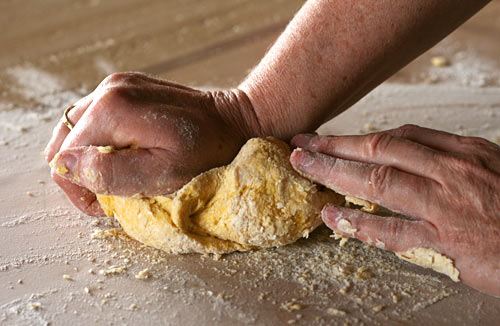
Begin to knead the ball of dough as you would bread, pushing it down with the heel of your hand. Continue kneading until the dough is smooth and satiny, for about 5 to 7 minutes.
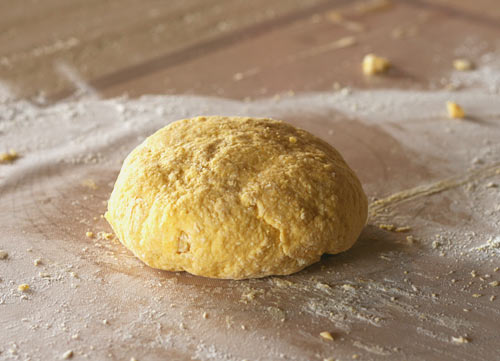
Roll the dough into a smooth ball.
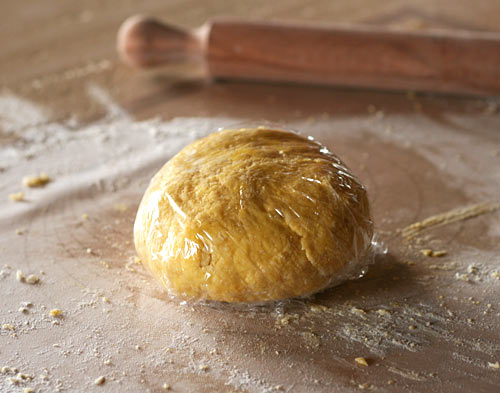
Wrap the dough in plastic wrap and let rest for 30 minutes.
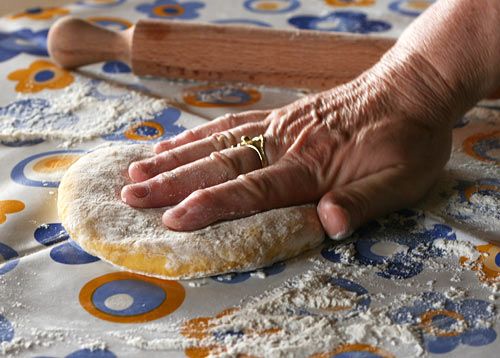
Take the ball of dough, remove the plastic and press it into a disk on a lightly floured surface.
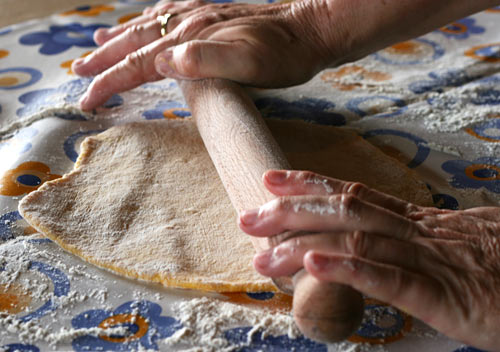
Take your rolling pin and begin to roll the dough keeping it lightly floured and turning it as you roll.

Continue to roll your dough until it is about 1/8th of an inch thick and almost see through.
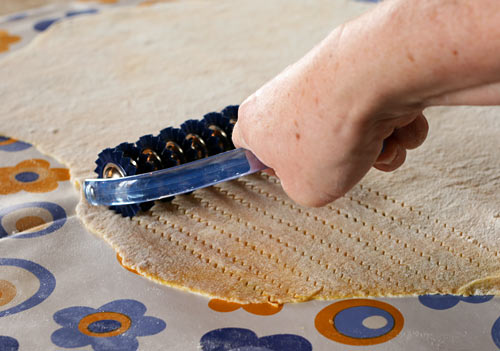
Cutting Method #1 – Use a pastry cutter like this ruffled one to cut ribbons of pasta keeping the strands lightly floured. Carefully separate with your fingers and lightly toss with flour.
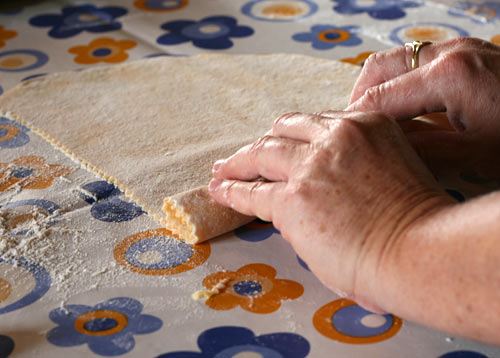
Cutting Method #2 – Roll the sheet of dough into a tube.

Cutting Method #2 – Use a sharp knife cut the dough into strips about 1/4 inch thick. Use your fingers to loosen the dough and toss gently with flour to prevent the dough from sticking together.
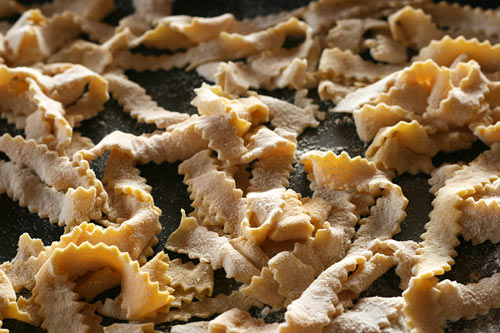
Lay the cut strands of dough on a lightly floured baking sheet until you are ready to use.
To Use A Machine To Roll Pasta
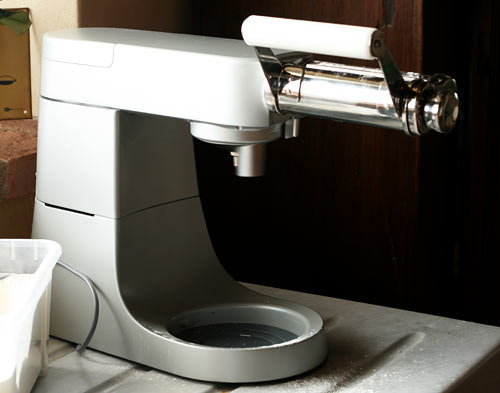
You can also use either a hand crank pasta machine, or an attachment to a table mixer as shown above to roll and cut pasta.
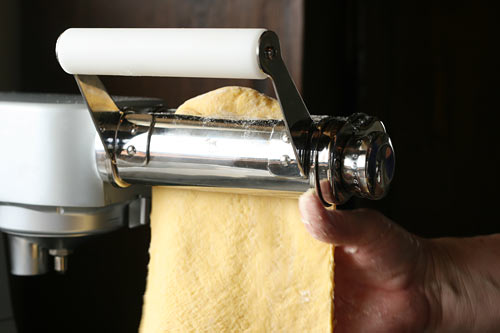
Begin on the lowest setting on the dial, run the disk of dough through the rollers. Fold in half, lightly flour and run it though once again.
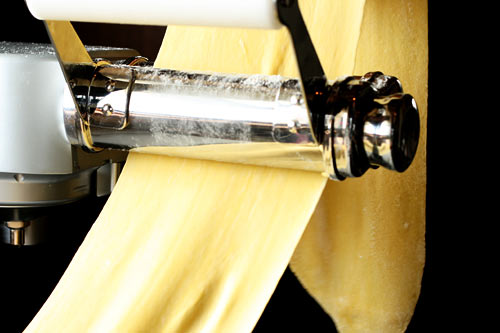
Continue to run the dough through the rollers, increasing the number (decreasing space between rollers) each time and keeping the dough lightly floured to prevent sticking until you have reached your desired thickness. I usually stop at the second to last number on the dial.
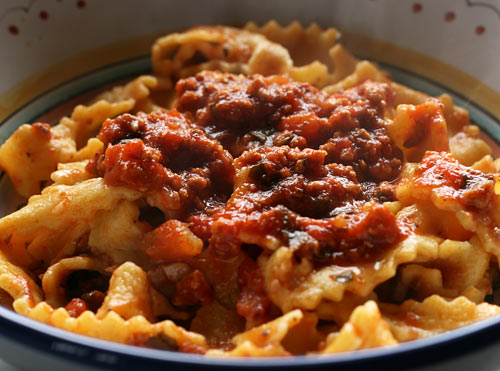
Cook your pasta in a pot of salted boiling water until tender (al dente). Fresh pasta will only take a few minutes to cook so keep a close watch on the pasta while it is cooking.</p
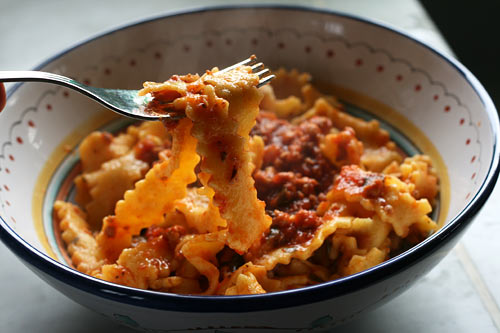
A delicious bowl of Pappardelle With Tomato Sausage Sauce.
Deborah Mele
Here is something we teach for “grabbing sauce” pasta. This adds texture like wood grain to the fettuccine (or whatever pasta you are preparing).
After passing the dough at lower setting, rub semola flour on the sheet on both sides. Not just sprinkle over, really rubbing it inside like to create sandpaper.
Let the sheet dry on canvas for about 10 minutes until becomes enough dry, to test has to have a “papery” feeling at touch. Then do the second pressing skipping one number (on our marcato machine we go from 1 to 3). If all went well the pasta would create nice little cracks on the surface. Then do the last pressing again waiting a bit (not too much).
Manuela
You’ve made this look so easy! I’m willing to finally give it a try! 🙂 Thank you for posting this.
Do you have a recipe for an eggless homemade pasta? I have a vegan daughter and would like to make some homemade pasta. I have tried a plain flour and water recipe, but did not like the texture and it cooked up too soft. Thanks Vicki DiFederico
Vicki, the only eggless pasta I know is water and flour. I’ve made it often and didn’t find it too soft. Try semolina flour next time.
Hey Deb. I found using bread flour actually is a higher protein flour that holds up better than all purpose flour especially when rolling it thinner. I have even used high gluten pizza flour which also works but if you don’t roll the noodles to # 6 or 7 thin they take longer to get tender.
Hello. I just wanted to say thank you for all of your wonderful recipes! I am new to your site, but am so impressed by all the from scratch recipes. My mother’s side of the family is italian. Reading through your site brings back many wonderful memories and am really excited to try your recipes. You have inspired me! Thank you so much…..
The way you explain it really makes it look easy. I’ve wanted to try this for a while but I never did cause I thought it was too difficult. Now I’ve seen this I will definitely give it a try.